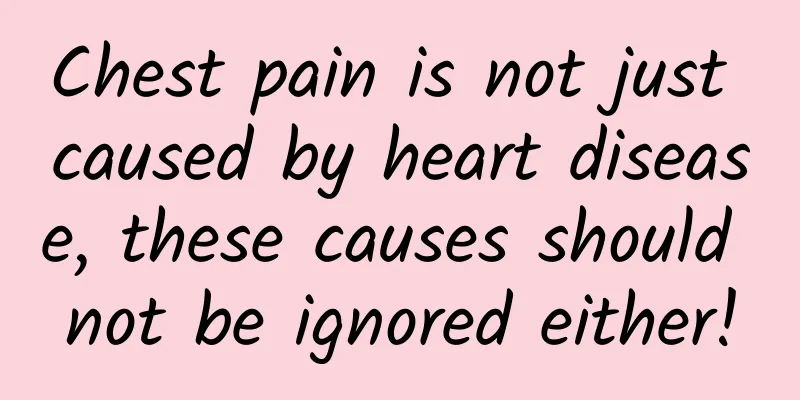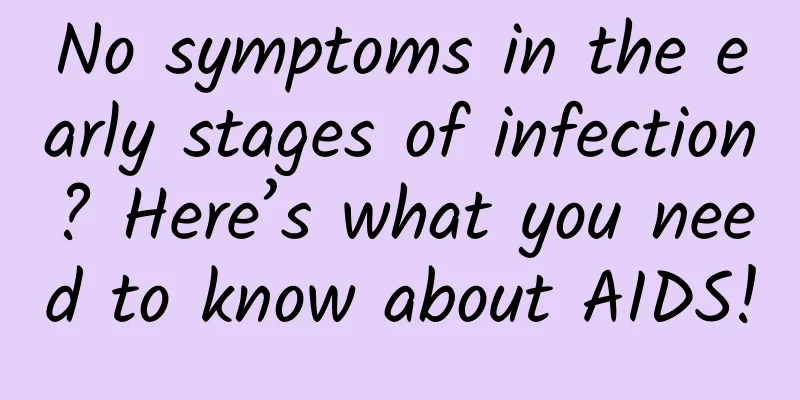Chest pain is not just caused by heart disease, these causes should not be ignored either!

|
Author: Zhang Jianjun, Chief Physician, Beijing Chaoyang Hospital, Capital Medical University Reviewer: Hua Wei, Chief Physician, Fuwai Hospital, Chinese Academy of Medical Sciences In daily life, chest pain is a common and worrying symptom. When many people experience chest pain, they immediately think of heart disease, but in fact, chest pain has a variety of causes, which may be caused by heart problems or related to other organs or systems. From mild intercostal neuralgia to life-threatening acute myocardial infarction, different chest pain symptoms often indicate different health problems. Therefore, when chest pain occurs, it is crucial to identify its cause promptly and accurately. The heart is an important organ of the human body, and its health directly affects our quality of life. When there is a problem with the heart, chest pain is often one of the earliest and most significant symptoms. 1. Angina pectoris and myocardial infarction Angina pectoris is a manifestation of coronary heart disease, usually manifested as pain or discomfort in the precordial area or behind the sternum, which lasts for a short time, generally no more than half an hour. This pain is often induced by physical activity or emotional excitement, and can be quickly relieved by resting or taking nitroglycerin. Myocardial infarction is a serious consequence of complete blockage of the coronary artery. The pain is more severe and lasts longer, often accompanied by sweating, a sense of impending death, etc. At this time, you should immediately seek medical attention and receive emergency treatment. 2. Aortic dissection Aortic dissection is an extremely dangerous cardiovascular emergency characterized by tearing pain in the chest, and the pain range increases with the expansion of the aortic tear. The occurrence of aortic dissection is often closely related to factors such as hypertension and atherosclerosis. Once such symptoms occur, you should seek medical attention immediately to avoid missing the best time for treatment. 3. Arrhythmia Arrhythmia may also cause chest pain. Patients with frequent premature ventricular beats often feel a sense of cardiac arrest, accompanied by chest pain. In this case, electrocardiogram and other examination methods can be used to make a clear diagnosis and take appropriate treatment measures. However, chest pain is not an exclusive symptom of heart disease; many non-heart diseases can also cause chest pain. ①Respiratory diseases Respiratory diseases such as pulmonary embolism, pneumothorax, and pleurisy can all cause chest pain. Patients with pulmonary embolism often present with the triad of dyspnea, chest pain, and hemoptysis; pneumothorax often presents with sudden chest pain and dyspnea; pleurisy presents with chest pain that is closely related to respiratory movements. For these patients, they should seek medical attention in a timely manner and receive targeted treatment. ②Chest wall disease Chest wall diseases such as intercostal neuralgia and costochondritis are also common causes of chest pain. This type of chest pain is often paroxysmal, unrelated to physical activity, and has local tenderness. Through a detailed physical examination and necessary auxiliary examinations, a clear diagnosis can be made and appropriate treatment measures can be taken. Figure 1 Original copyright image, no permission to reprint ③Other factors In addition, there are some other factors that may cause chest pain symptoms, such as esophageal diseases (such as reflux esophagitis), neurosis, etc. For such patients, a comprehensive assessment should be conducted to exclude organic lesions before considering the influence of psychological factors. When faced with sudden chest pain, people tend to panic, but the right response is crucial. First of all, you should seek medical attention immediately. Hospitals can provide more comprehensive safety protection. Emergency doctors will determine the cause of chest pain based on medical history, physical signs and necessary auxiliary examinations, and deal with it quickly. In the emergency room, doctors will first check for conditions that may threaten life, such as myocardial infarction, aortic dissection, tension pneumothorax and pulmonary embolism, and take appropriate measures in a timely manner. Secondly, when seeking medical treatment, patients should truthfully inform the doctor of their symptoms, the characteristics of the pain, the time of onset, and any possible triggers, which is crucial for accurate diagnosis. The doctor will make a preliminary judgment on the nature of the pain by taking a detailed medical history and performing a physical examination. Subsequently, based on the results of the preliminary judgment, electrocardiogram, cardiac ultrasound, coronary angiography, or CT vascular imaging may be arranged to further clarify the diagnosis. For example, for patients suspected of angina pectoris or myocardial infarction, an electrocardiogram can show whether the myocardium is ischemic; cardiac ultrasound can help observe the structure and functional status of the heart; and coronary angiography can help determine whether the coronary arteries are narrowed or blocked. In addition, patients should follow their doctor's orders and avoid taking medication on their own, especially using nitroglycerin or other drugs without a doctor's consent, because incorrect treatment may mask the condition and delay diagnosis. Figure 2 Original copyright image, no permission to reprint At the same time, maintaining good living habits, such as a reasonable diet, moderate exercise, smoking cessation and alcohol restriction, can also help prevent the occurrence and development of cardiovascular diseases. |
>>: Waking up at night? Having trouble breathing? This could be your heart crying out for help!
Recommend
What is the scraping area for uterine fibroids?
We all know that uterine fibroids are a gynecolog...
Counterpoint: US smartphone shipments to drop 8% year-on-year in Q1 2024
According to Counterpoint’s market monitoring dat...
How to grade breast nodules
Breast nodules are a common health problem among ...
The national standard for pre-prepared dishes is here! Are you still worried about pre-prepared dishes?
Recently, the State Administration for Market Reg...
Moxibustion for pelvic effusion
Some women may have gynecological diseases such a...
What should we do if female hormone secretion is out of balance?
Hormones are the most important self-secreted hor...
Can you eat fruit if you have high blood sugar? Here’s how to choose the right fruit and avoid pitfalls!
As people's living standards improve, diabete...
What causes small rashes at the vaginal opening?
The vaginal opening refers to a part of the femal...
What is the significance of the discovery of Peking Man? Why did Peking Man live in groups?
Peking Man lived between 700,000 and 200,000 year...
There is almost no menstrual period in the first three days
Although irregular menstruation is a common condi...
How long does it take for the pelvic inflammation suppository to be absorbed?
Pelvic Inflammation Suppositories mainly have the...
Sudden sleepiness means pregnancy?
For some couples who are preparing for pregnancy,...
Can a woman at 45 still have a baby?
Many women actually have many misunderstandings a...
Which breast pad is better, silicone or cloth?
Recently, more and more people like to wear silic...









